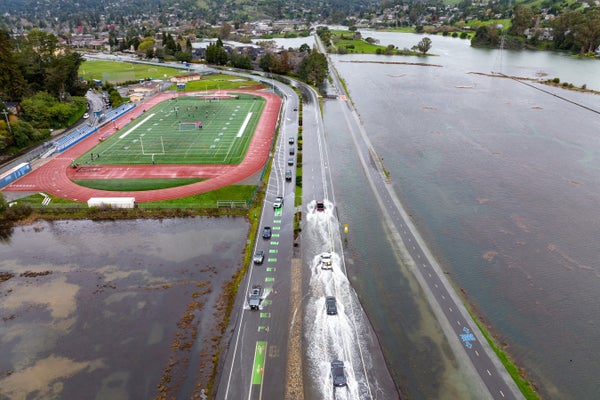CLIMATEWIRE | Federal rules allowing developers to use fill dirt to elevate new houses in high-risk flood areas should be changed because the practice can exacerbate damage to nearby homes, according to an advisory board to the Federal Emergency Management Agency.
The Technical Mapping Advisory Council (TMAC) said the widespread use of "fill and build" in floodplains, which has drawn fire from environmental groups in low-lying neighborhoods, can be environmentally harmful.
The practice “can create a false sense of security” for property owners, especially new buyers who believe they are safe from flooding, the council said in an interim report obtained by E&E News last week. “The placement of fill for this purpose reduces the carrying capacity of the floodplain, leading to increased flood risk over time."
On supporting science journalism
If you're enjoying this article, consider supporting our award-winning journalism by subscribing. By purchasing a subscription you are helping to ensure the future of impactful stories about the discoveries and ideas shaping our world today.
FEMA should also consider limiting the use of fill material for bridges, dams and wastewater treatment facilities “along with other uses functionally dependent on proximity to water,” the panel said.
The recommendations were outlined last week in an interim report addressing a number of thorny policies, including a potential expansion of the National Flood Insurance Program.
Although fill material is widely used to elevate property lots in coastal and riverine areas, critics say the FEMA-sanctioned practice creates more problems than it solves by encouraging development in floodplains that act as natural buffers to floodwater. As natural floodplains give way to home lots, there’s less room for floodwater to disperse, they say.
Building homes on compacted fill material also skews flood insurance requirements because those homes are no longer deemed to be within what FEMA calls a “Special Flood Hazard Area,” where property owners with federally backed mortgages must carry flood insurance.
But as seas rise and storms intensify because of climate change, experts say those flood zones will expand, meaning today’s low-risk properties could become high-risk. The burden is often shouldered by neighbors whose homes were not built on elevated piles of fill material.
TMAC said these indirect hazards can “go unnoticed because there are no requirements to communicate these changes to impacted landowners.”
Environmental groups that have pushed to prohibit fill and build, mostly through local building codes like those recently adopted in Charleston, S.C., welcomed the advisory council's call to end the practice for residential and commercial sites.
“Fill and build protects a few and increases flooding on the many,” said Rob Moore, senior policy analyst with the Natural Resources Defense Council. “It’s a practice that needs to be ended, especially in this day and age,” when floods are happening more frequently and with greater intensity.
Critics argue that such development sites, which must be permitted by FEMA under a review process called “letter of map amendment" (LOMA), are being approved without sufficient FEMA oversight. They say the burden of enforcement falls on local building authorities that are under-resourced and subject to pressure from developers.
FEMA approves more than 3,600 LOMAs for fill-and-build sites each year, according to the advisory council's interim report, and “these likely represent a fraction of the fill and other development taking place in the flood fringe.”
While FEMA has additional regulations on fill use and has released guidance on making homes “reasonably safe from flooding," TMAC said that “the scattered nature of these requirements and guidance make it difficult to understand appropriate uses of fill and when or how to communicate the impacts fill may have on flood hazards.”
Developers and homebuilders argue that the LOMA program provides benefits to builders and homeowners who would not otherwise be able to afford houses in desirable areas, including near coastlines and rivers.
Michael Mittelholzer, assistant vice president for environmental policy at the National Association of Home Builders, said the use of fill has been a standard practice for many years, and “to prohibit residential or commercial activities from being able to use FEMA’s [permitting] process would impact future residential construction activities within those metropolitan areas with extensive floodplains.”
He added that prohibiting the practice in low-lying areas also “would probably result in fewer new housing units being built in these communities.”
A FEMA spokesperson said in an email that the agency will review TMAC’s recommendations.
“As flooding becomes more frequent and severe, FEMA is continuously working with agency partners to develop a more comprehensive picture of its hazards and risks across the nation.” The email continued, “The agency is not obligated to implement any of them.”
Reprinted from E&E News with permission from POLITICO, LLC. Copyright 2022. E&E News provides essential news for energy and environment professionals.
